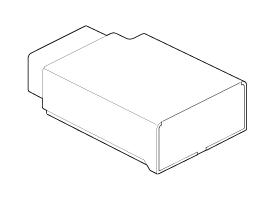 Kia Sportage: TPMS Receiver: Description and Operation
Kia Sportage: TPMS Receiver: Description and Operation
Third generation SL (2010Ц2016) / Kia Sportage SL Service & Repair Manual / Suspension System / Tire Pressure Monitoring System / TPMS Receiver: Description and Operation
| Description |

| 1. |
Mode
|
| 2. |
Overview
|
| Operation |
| 1. |
General Function
|
| 2. |
General Conditions to Learn New Sensors:
|
| 3. |
General Conditions to Un-Learn a sensor that is removed:
|
 TPMS Sensor: Repair procedures
TPMS Sensor: Repair procedures
Removal
Tire Removal
1.
Deflate tire & remove balance weights.
Sensor can be unscrewed before unseat the tire bead.
Х
The ...
 TPMS Receiver: Schematic Diagrams
TPMS Receiver: Schematic Diagrams
Schematic Diagrams
TPMS Receiver Circuit Diagram
Harness Connector
PinDescription1Battery2CAN_High3GND4-5-6-7IGN8CAN_Low9-10-11-12-
...
Other Information:
Certification label
The certification label is located on the driver's door sill at the center pillar.
This label shows the maximum allowable weight of the fully loaded vehicle. This
is called the GVWR (Gross Vehi ...
Front Wheel Speed Sensor: Components and Components Location
Components
1. Front wheel speed sensor connector2. Front wheel speed sensor
...
Categories
- Home
- Kia Sportage QL (2015-2019) Owners Manual
- Kia Sportage QL (2015-2019) Service Manual
- Kia Sportage SL 2010-2016 Owners Manual
- Kia Sportage SL 2010-2016 Service Manual
Copyright © www.kispmanual.com 2014-2024
